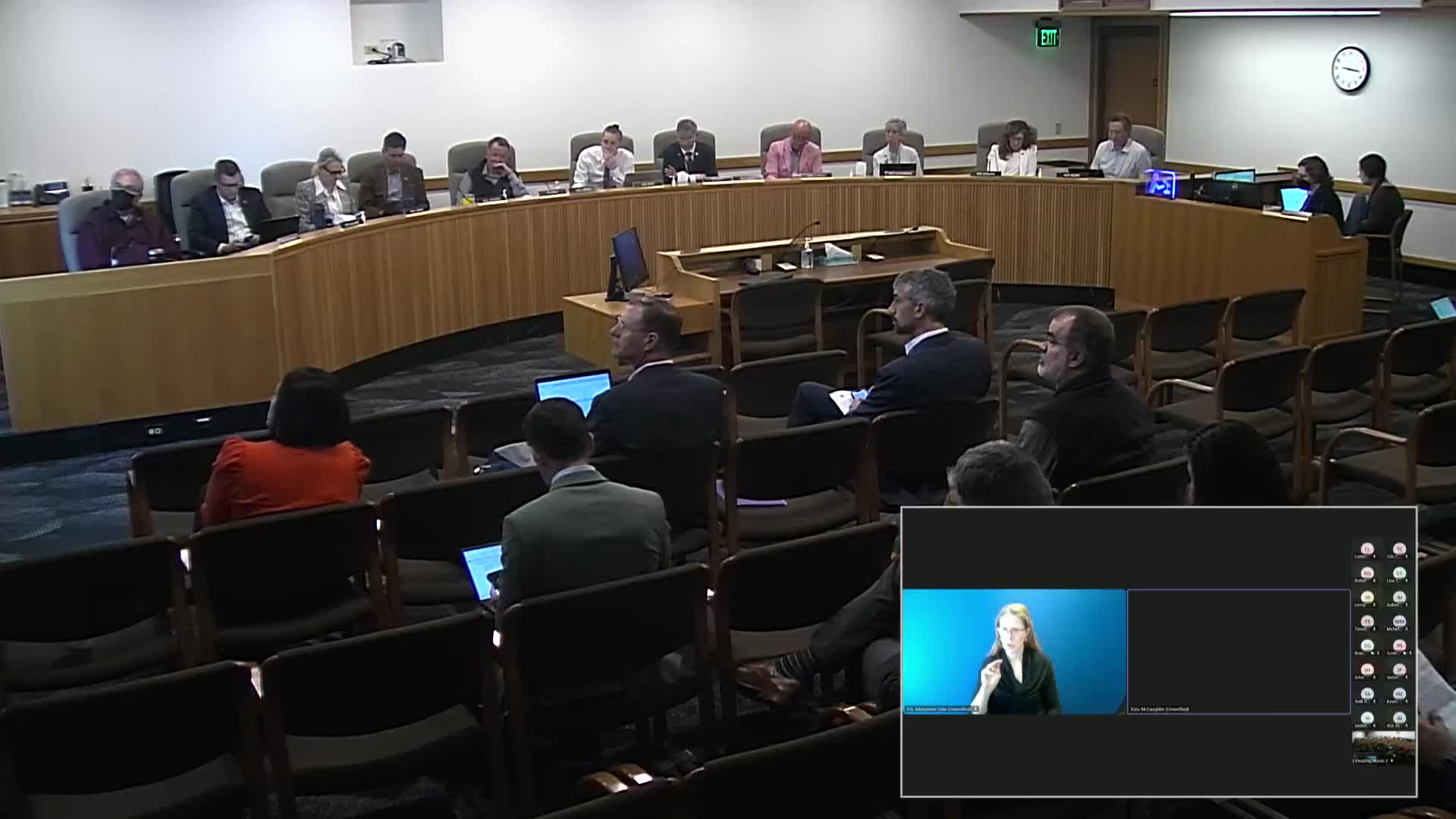University of Oregon proposes Child Behavioral Health Building amid youth mental health crisis
May 02, 2025 | Capital Construction, Ways and Means, Joint, Committees, Legislative, Oregon
This article was created by AI summarizing key points discussed. AI makes mistakes, so for full details and context, please refer to the video of the full meeting. Please report any errors so we can fix them. Report an error »

The Joint Committee on Ways and Means Subcommittee on Capital Construction convened on May 2, 2025, to discuss significant funding requests from Oregon's public universities aimed at enhancing student health and educational facilities.
The University of Oregon (UO) presented a compelling case for its Child Behavioral Health Building, which aims to address the pressing youth mental health crisis in Oregon, currently ranked 49th in the nation for youth mental health. The proposed facility on UO's Portland campus will replace four outdated buildings and serve as an innovation hub, integrating training, research, and services to improve mental health care for children. The project is highly prioritized, receiving the top ranking from the Higher Education Coordinating Commission, reflecting its alignment with state goals for workforce development and equity.
Whitney McFarland, president of the student government at OSU Cascades, advocated for a $42 million capital request for a new student health and recreation center. She emphasized the lack of accessible mental and physical health resources on campus, which affects student well-being and academic performance. The project has garnered significant student support, with a commitment of $20 million from student fees, highlighting the urgent need for improved health services.
David Razzati, head of the physics department at Oregon State University, urged support for the STEM Learning Center, which will provide essential educational resources for future innovators in various fields. He stressed the importance of a strong foundation in physics for students pursuing careers in engineering and medicine.
Brandon Givens, director of Southern Oregon University's Digital Media Center, presented the creative industries project, which aims to enhance training in media and music production. This initiative is expected to contribute significantly to Oregon's economy, generating over $9 billion annually and supporting more than 62,000 jobs.
The discussions underscored a collective commitment to improving educational infrastructure and student services across Oregon's public universities, with each project reflecting broader state priorities in health, education, and economic development. The committee's decisions on these funding requests will play a crucial role in shaping the future of higher education in the state.
The University of Oregon (UO) presented a compelling case for its Child Behavioral Health Building, which aims to address the pressing youth mental health crisis in Oregon, currently ranked 49th in the nation for youth mental health. The proposed facility on UO's Portland campus will replace four outdated buildings and serve as an innovation hub, integrating training, research, and services to improve mental health care for children. The project is highly prioritized, receiving the top ranking from the Higher Education Coordinating Commission, reflecting its alignment with state goals for workforce development and equity.
Whitney McFarland, president of the student government at OSU Cascades, advocated for a $42 million capital request for a new student health and recreation center. She emphasized the lack of accessible mental and physical health resources on campus, which affects student well-being and academic performance. The project has garnered significant student support, with a commitment of $20 million from student fees, highlighting the urgent need for improved health services.
David Razzati, head of the physics department at Oregon State University, urged support for the STEM Learning Center, which will provide essential educational resources for future innovators in various fields. He stressed the importance of a strong foundation in physics for students pursuing careers in engineering and medicine.
Brandon Givens, director of Southern Oregon University's Digital Media Center, presented the creative industries project, which aims to enhance training in media and music production. This initiative is expected to contribute significantly to Oregon's economy, generating over $9 billion annually and supporting more than 62,000 jobs.
The discussions underscored a collective commitment to improving educational infrastructure and student services across Oregon's public universities, with each project reflecting broader state priorities in health, education, and economic development. The committee's decisions on these funding requests will play a crucial role in shaping the future of higher education in the state.
View full meeting
This article is based on a recent meeting—watch the full video and explore the complete transcript for deeper insights into the discussion.
View full meeting
